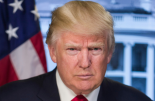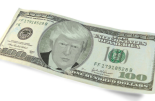Schroders: Implications 2024 US election outcome for investors
Schroders: Implications 2024 US election outcome for investors

Markets have responded to Donald Trump's election victory by anticipating pro-growth policies and higher inflation. Schroders' experts share their longer-term views on what his return to office will mean for the US economy and world trade, global equities, fixed income and the energy transition.
Johanna Kyrklund, Group Chief Investment Officer:
'Trump’s victory in the US presidential election has not changed our positive stance on global equities, with a preference for US shares. In his previous administration, Donald Trump was focused on the Dow Jones as a barometer of his success.
In the background, we continue to see a soft landing for the US economy. Fiscal policy is likely to remain supportive.
The key risk is on trade: we could start to hear pronouncements from Trump quite soon. In the short-term, a protective trade stance is supportive of the US dollar and poses a risk to growth outside the US. We would expect the Chinese authorities to continue with stimulative policies to offset this.
Europe becomes more of a concern, however, as it could then become caught in the crosshairs of a more hostile trade environment – without the unified leadership that is required to tackle it.
We continue to advocate owning bonds for old-fashioned reasons - to generate income. The role of bonds as diversifiers continues to remain challenged by the likelihood of expansionary fiscal policies.
In the big picture, however, we continue to see a low risk of a hard economic landing and view this administration as increasing the risk of inflation rising later in 2025 due to their trade and fiscal policy.
The worst outcome would have been a contested election, which we have avoided.'
Economic impact: Trump victory to be inflationary for US economy
George Brown, Senior US Economist:
'After what had looked set to be a close contest, Donald Trump has managed to pull off a decisive victory over Kamala Harris. In doing so, he has become only the second individual to be elected to a second non-consecutive term as president.
The only question that remains is whether the Republicans will also take both chambers of Congress. While they have regained control of the Senate, it remains unclear how the House of Representatives will shape up amidst tight races in California and New York.
However, the party is tipped to retain their majority In the House. Betting odds on Polymarket currently assign a probability of over 90% on a so-called Red Sweep, a marked rise from the 35% they had been when voting closed in states on the East Coast.
Trump is therefore well-positioned to implement his policy agenda. He has pledged to cut taxes and regulation further while also raising tariffs and restricting immigration, the combination of which will be reflationary for the US economy.
And so, later this month we intend to further raise our above-consensus 2.1% growth forecast for 2025. Our previous forecasts in August were conditioned on betting odds at the time, which had pointed to a divided government under Harris.
Inflation should also prove stickier, reinforcing our conviction that the Federal Reserve (Fed) will not deliver as much easing as it has indicated it will. Given our view that the neutral rate lies around 3.50%, Trump’s return to the White House likely means that the Fed needs to keep rates above this level.” (The neutral rate is a theoretical interest rate deemed neither too restrictive, nor too loose for growth and inflation to settle back onto steady and predictable paths.)'
Fixed income: Election may lead to higher yields and continued dollar strength
James Bilson, Fixed Income Strategist:
'While we await the final results, it seems likely that we will have a ‘red sweep’ with the Republicans taking both the Senate and House of Representatives, as well as the Presidency. We would therefore expect the market to further price in both the impact of greater fiscal easing and more aggressive trade policy.
It's important not to lose sight that even without the election, US growth data has been very strong recently. Given that strength, any loosening of fiscal policy would make the Fed’s task of bringing and keeping inflation to target levels more difficult and increase the risk of a ‘no-landing scenario’ for the economy. (No landing refers to a scenario in which inflation remains sticky and interest rates may be required to be kept higher for longer).
Thus, we see this outcome leading to higher yields, US bond underperformance and continued dollar strength. Markets have already moved significantly in this direction over recent weeks (and again overnight).
In terms of trade, policy is likely to fluctuate in the medium term, but in the short-term we anticipate that concerns over the global trade cycle will impact regions such as Europe, leading to a weaker euro vs the US dollar.'
Lisa Hornby, Head of US Fixed Income:
'The initial market reaction saw Treasury yields move immediately higher, with yield curves steepening (i.e. the difference between short and long-term rates increasing). In our view, the Treasury yield range has likely shifted higher, and we would be surprised to see 10-year yields trade below 3.50% again in the absence of a US recession.
Similarly, history suggests that curves typically steepen when one party controls all branches of government and so we would expect this trend to continue. Credit spreads, or the additional premium one earns for taking credit risk above the risk-free rate, narrowed significantly in response to the election outcome as the markets moved to fully discount a more supportive backdrop (potentially lower corporate taxes and reduced regulation) for the corporate sector.
We would expect the implications for specific industries to become clearer as Trump begins to establish personnel in his administration.
Other segments of the fixed income market are more mixed. Within emerging markets, both investment grade and high yield spreads are performing well. Higher growth prospects for the US are beneficial for EM growth, however, the pressure points will be concentrated in EM currencies.
The Fed's neutral rate appears to be rising under Trump's pro-growth policies; we believe this will make the dollar strong in the short term. That being said, US long-term imbalances, including fiscal issues, may ultimately weigh on the dollar in the long term.
While the election is topical, it is not the primary driver of positioning. In our view, the key challenge facing investors today is that the risk/return trade-off has shifted substantially. Specifically, the amount of return investors are demanding or accepting per unit of risk has declined sharply compared to historical norms.
While corporate fundamentals are well supported (and perhaps even more so with a Republican sweep), credit spreads are in the bottom decile of their historical range. This suggests an asymmetric risk / reward framework with a much higher probability of downside than upside. The implication of a potential Republican sweep adds one more pillar of uncertainty, which again suggests that more risk premium should be embedded into markets, not less.'
Emerging market (EM) equities: Tariffs pose a risk
Tom Wilson, Head of Emerging Market Equities:
'A Trump administration is likely a net negative for emerging market (EM) equities.
The potential for broad-based application of tariffs on imports to the US, with a particularly significant rise in tariffs on China, is the most notable risk for EM. Tariffs would likely lead to currency weakness for exposed countries, especially given the potential for depreciation of the renminbi. On the other hand, the application of high tariffs may prompt a more significant Chinese policy response to defend against the impact on growth.
There is also uncertainty regarding the actual outcome, particularly with regards to China: to what extent is the threat of high tariffs the start of a negotiating process? And even if high tariffs are applied, to what extent will they be phased in through time?
Trade tariffs and other Trump administration policies may be inflationary for the US. The expected outcome would be dollar strength, higher inflation, less easing from the Fed and a higher US yield curve. All of this is broadly unhelpful for EM equity returns, pressuring currencies and limiting freedom of action for central banks.
Another question is regarding US foreign policy and the extent to which the US is more isolationist under a Trump presidency. This may lift risk premiums in certain markets. In Asia, we would not expect the US commitment to Taiwan to change markedly, given the extent to which Taiwan is critical to US interests in the technology supply chain. However, it is important that that the US-China relationship is carefully managed to avoid exacerbating risk.
It may be that a Trump administration drives a faster resolution of the conflict in Ukraine. This can have either positive or negative outcomes (Ukraine reconstruction vs concerns that any settlement won’t last). One impact is likely to be an ongoing increase in European defence spend.
In relation to the immediate market reaction, China is weak and India is strong, while Fed-sensitive markets in Asia are soft. This is in line with expectations. India is less exposed than other emerging markets to the impact of Trump policies, hence India may prove defensive in the near term. In China, the market now has a stronger policy backstop. Despite trade uncertainty, we would be wary to stray from our existing neutral view, given the potential for further policy support and supportive positioning.
Global equities: Corporate tax cuts and deregulation could offer support for US shares
Simon Webber, Head of Global Equities:
'We remain constructive on US equities on a 12-month view, underpinned by modest earnings growth, although if the yield curve continues to move higher (i.e. bond yields rise) this will begin to impact valuations.
There are some risks to corporate profitability from a Trump win as tariffs could pose a headwind for profit margins in some sectors where there is still a reliance on China-imported goods. Meanwhile, an expected clampdown on immigration could drive wage growth, particularly in consumer and construction sectors.
These are inflationary dynamics. Companies with pricing power (the ability to raise prices without denting demand) should fare better in this environment although demand destruction may be a feasible scenario.
More positively for US companies, Trump’s proposed corporate tax cut would clearly be a tailwind. Deregulation should be supportive for US equities as well, particularly for larger banks and areas of technology such as artificial intelligence (AI) outside of the mega cap tech companies. Indeed, structural investment themes in some cases could thrive in a new Trump era where innovation is likely to be underpinned by looser regulation to maintain US technological leadership.
We think anti-trust regulation under Trump is likely to see a return to more laissez-faire competition policy compared to a Harris Administration. An exception to this may be some of the big tech and social media platform companies, where JD Vance has been clear that he believes some firms should be broken up and other big tech platforms have a clear liberal bias that needs to be addressed.
Trump’s rhetoric on tariffs is serious, but also a negotiating tactic. We will have to carefully evaluate the actual implementation of tariffs. If sizeable blanket tariffs are applied to all imports or to all China imports, then inflation will almost certainly rise and consumer spending will be impacted.
Energy and climate policy was one of the starkest divides between the two candidates. There is no doubt that under Trump the US will be taken out of most global efforts to tackle climate change. Business investment in the US value chain around key climate technologies is likely to be set back, with focus turning to the rest of the world where the energy transition will continue to gain pace.
In 2016, the market was caught by surprise as no one really expected Trump to win. This time around, investors have been pricing in Trump policy implications for months. Furthermore, the initial moves in 2016 were not always sustained. Perhaps the best example of this is the clean energy sector, which performed much better under Trump in the period of 2016-2020 than it did under Biden in 2020-2024, despite the Inflation Reduction Act being passed.
The point here is that politics and governments are not the only factors moving markets; it is the combination of valuations, cycles and competition that generally dominates in the medium term.'
Energy transition: Green incentives at risk but cost case for renewables remains intact
David Boyce, CEO, North America for Schroders Greencoat:
'Over the past 15 years, the cost to generate power from wind and solar has plummeted, and now competes head-to-head with the variable costs of producing power from fossil fuels. From a cost perspective for utilities, renewables have become a no-brainer.
President-elect Donald Trump has hinted that he wants to end the economic support for the clean energy industry, but he may struggle to unilaterally scrap the Inflation Reduction Act (IRA). Ending green tax incentives would require support from the US Congress, which the new President may not be able to garner given the broad economic stimulus the IRA has produced.
Based on our analysis of data on green energy projects, we have found that more than 50% of new jobs and capital expenditure have been announced in Republican-leaning states compared with 20% in Democrat-leaning states since the passage of the IRA.
Still, a slowdown of the clean energy transition is possible as President Trump could hinder the climate law through executive actions, such as tightening on the rules around qualification for tax credits or by freezing the rollout of grants and loans for green energy projects.
President Trump could also bring back section F, which would reclassify the role of thousands of federal employees. In doing so, President Trump could gain a lot of influence over personnel at key policy institutions such as the Environmental Protection Agency (EPA). His first administration cut EPA budgets and limited its regulatory activities. These areas of government would be particularly vulnerable to further cuts.'
Alex Monk, Portfolio Manager, Global Resource Equities:
'Trump's administration policies are likely to be more inflationary. Capital costs are an important driver of both sustainable energy project development and consumer demand for clean energy goods. Therefore, the potential for reduced investment, ongoing project delays, and slower than hoped consumer adoption of key technologies like electric vehicles, rooftop solar, and heat pumps is undoubtedly somewhat at risk.
While the outcome of a Republican sweep does create near-term uncertainty from a policy perspective, we think the risk of a wholesale repeal of key initiatives, such as the Inflation Reduction Act, is low.
What’s more, policy is not the only driver of the energy transition, and the US is not the only market for companies across the space. We have always stressed that the long-term drivers of the global energy transition are three-fold: 1) improving costs and technologies; 2) growing consumer and corporate demand for sustainable energy goods and services; and 3) long-term policy support. In this context, while the shifting US policy landscape is undoubtedly unhelpful, it should not distract from the strength of other forces encouraging investment in the space.
Finally, in our view, valuations across the energy transition equity sector are already more than pricing in any disruption and change.'








